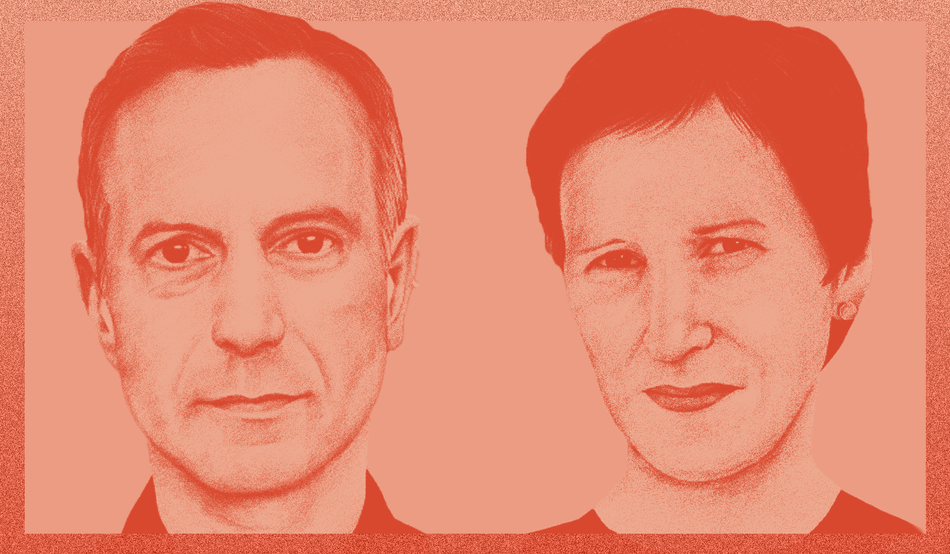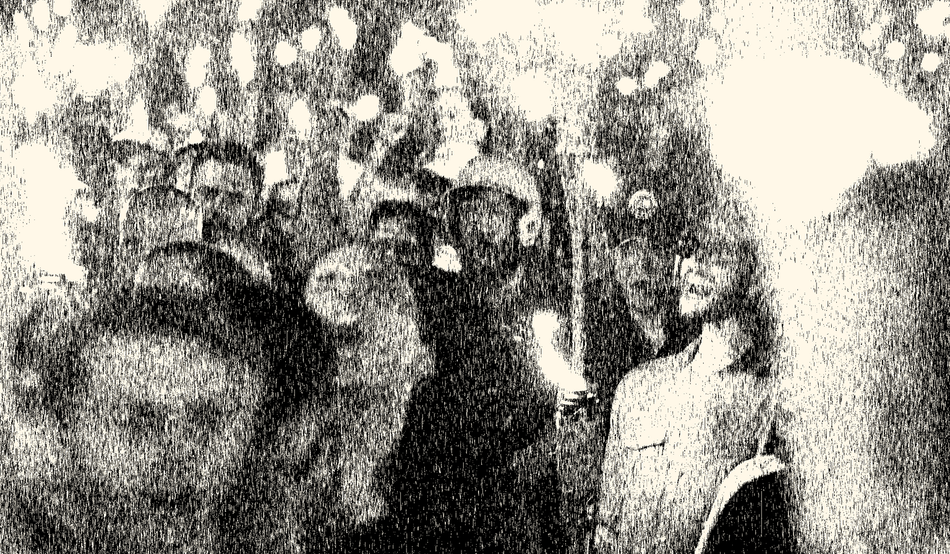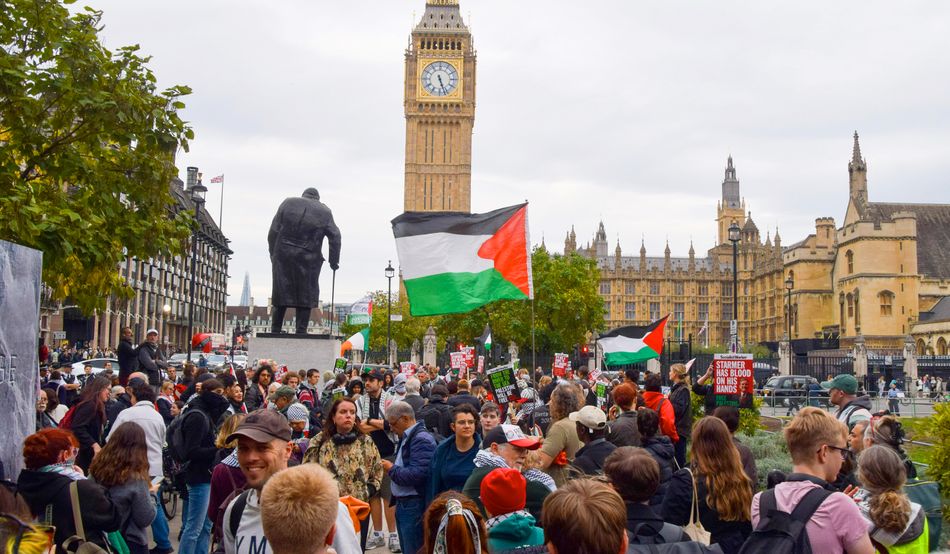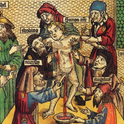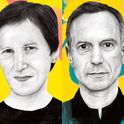The murderous attack this month on worshippers at a Manchester synagogue on Yom Kippur, the holiest day in the Jewish calendar, has left many Jews in Britain with a sense of foreboding. Given the timing of the attack—on the eve of a fragile ceasefire in Gaza—many MPs and Jewish leaders understood the shocking scene at Heaton Park as a coda to the two-year period since Hamas’s 7th October massacre in southern Israel.
Throughout this time, prominent figures have decried protests against Israel’s assault on Gaza and its population as hives of antisemitism. In their responses to the atrocity in Manchester, senior politicians and communal leaders in the UK, from the prime minister to the chief rabbi, have presented a now familiar story of British Jews in peril. In this telling, the attack is the latest expression of a rampant and unrelenting wave of antisemitism. Is this a true reflection of Britain today? If not, what are the implications for politics and policy?
Public discussions too often fail to acknowledge that there are different ways of measuring antisemitism. No measure is perfect, but taken together they build a picture that is strikingly different from the conventional wisdom expressed in response to the murders at Heaton Park.
Of all the available data, reports of recorded antisemitic incidents seem to indicate that antisemitism in the UK is rising dramatically. The Jewish charity the Community Security Trust (CST), recorded 1,521 antisemitic incidents across the UK in the first half of 2025, the second-highest total ever reported in the first six months of any year. Reported incidents since October 2023 have been consistently high, usually well over 200 a month—far more than in preceding years.
The data on reported incidents is echoed in Jewish perceptions of antisemitism. A recent report by the Institute for Jewish Policy Research (JPR) shows that 47 per cent of British Jews now see antisemitism as a “very big” problem, up from just 11 per cent in 2012. Perhaps fuelled by encounters on social media, this reflects a widely held view among British Jews that an attack like the one in Manchester was waiting to happen. And these figures also indicate that an antisemitic incident is more than a single data point. Each experience reverberates among Jewish people as the hurt and harm is shared.
Yet the significance of such statistics is not clear cut. While hopefully we can all agree that what happened in Manchester was unambiguously antisemitic, definitions of what is and what is not antisemitic more generally are fiercely contested. In compiling its reported incidents data, the CST inevitably makes a series of judgement calls, and in doing so seeks guidance from the controversial IHRA (International Holocaust Remembrance Alliance) definition of antisemitism. In its list of examples of antisemitism, that definition includes “denying the Jewish people their right to self-determination, eg by claiming that the existence of a State of Israel is a racist endeavour” and “drawing comparisons of contemporary Israeli policy to that of the Nazis”. Many experts question the idea that these cross the threshold of antisemitism.
The CST also introduces disputable criteria of its own. For instance, the organisation says that placing anti-Israel posters in an area with a large Jewish population is more likely to be considered antisemitic. Yet others regard these actions as the legitimate exercise of freedom under law. Such criteria help to shape the data on reported incidents, as the CST identifies which anti-Israel expressions count as antisemitic. Whatever one’s view, without a granular assessment of the data it is impossible to know what choices are being made. Even a positive assessment of the CST’s work, made by the JPR last year, noted that “[w]ithout in-depth scrutiny of each set of data” it is not possible to assess exactly what is included in the CST’s count of incidents, and what is excluded.
There is another way of looking at antisemitism, however, which gives very different results. Social scientists and polling companies survey the British population’s attitudes to Jewish people. Far from showing an unrelenting wave of hate, this data indicates that antisemitism in Britain has been in steady decline over the last decade. Polls undertaken by YouGov suggest a striking shift in attitudes to Jewish people. For example, in 2015 the organisation reported that 25 per cent of respondents believed that Jews “chase money more than other people” whereas in early September this year that figure had dropped to 14 per cent. Similarly, the earlier survey found that 17 per cent of respondents believed that “Jewish people have too much power in the media” but this year the same question elicited a positive response from 13 per cent of those surveyed.
All of this leaves us with a puzzle. Jewish perceptions depict an antisemitism rising steeply, and many Jews are fearful. This is corroborated (and likely reinforced) by trends in recorded incidents. Meanwhile, research on attitudes suggests that antisemitism is in decline. The disparity between these approaches is rarely if ever remarked upon by politicians, Jewish communal leaders and commentators. A well-established alarmist narrative about rising antisemitism now dominates the headlines.
Responses to the atrocity in Manchester have brought this into focus. Across the responses and the commentary, there has been a widespread attempt to draw a straight line between the reported rise in antisemitic incidents and the attack at the Heaton Park synagogue. This response mistakenly conflates the reality of everyday antisemitism with what happened in Manchester.
Some have also attempted to trace the source of the atrocity to the mass demonstrations of solidarity with Palestine in many cities across Britain. The chair of the Jewish communal organisation the Board of Deputies, Phil Rosenberg, claimed that the “language, slogans and ideas” of the pro-Palestine movement are “shot through with anti-Jewish invective”. This echoes the claim, made by many others, that the murderous antisemitic violence in Manchester was made possible by the presence of a broad pro-Palestine movement on British streets. This is a distortion. While there have been some expressions of support for Hamas and antisemitic statements at these marches, they have been largely peaceful demonstrations involving people in their hundreds of thousands. Further, as the profile of the Manchester attacker emerges, there is no evidence that he was associated with the pro-Palestine movement.
Even more concerning is the response of the British government. In the aftermath of the synagogue attack it promised to restrict the right to protest in the name of Jewish safety. This rests on the mistaken idea that British Jews are united in the view that pro-Palestine marches make them less safe. But British Jews are more divided now, over this very issue, than they have been for a century, since the debates triggered by the 1917 Balfour Declaration.
The recent JPR survey of the Jewish population demonstrates that, within the 20-29 age cohort, only 47 per cent identify as Zionists, while 44 percent identify as anti-Zionist or non-Zionist. Across age groups, a majority say that Israel’s conduct in Gaza clashes with their Jewish values. The leadership represented by the Chief Rabbinate and the Board of Deputies is increasingly detached from this growing portion of the Jewish population.
How can we better protect Jews from antisemitism after the attack in Manchester? Measures to ensure the safety of Jewish people and buildings are important but insufficient. These must be supplemented by a politics that promotes broad alliances against racism, of which antisemitism is one example, and by the practice of anti-racist solidarity.
This will not be easy. There is the distance and suspicion—and sometimes worse—that exists between Muslims and Jews in Britain. The politics of Israel/Palestine will continue to feed these tendencies. Some entrepreneurs of panic and division within and outside both communities seek to capitalise on it.
However, Jews and Muslims can create the ground on which to build an alliance that opposes the prejudices that afflict both groups. We should welcome the fact that many Muslim leaders expressed solidarity for Manchester’s Jews—and that Jewish communal bodies condemned the anti-Muslim hate impresario Tommy Robinson (real name, Stephen Yaxley-Lennon), most recently when Israel’s diaspora minister invited him for an official visit.
A significant barrier that stands in the way of unity against racism, however, is the call by politicians and Jewish leaders to restrict the right to protest. Not only will this fail to address the problem of antisemitism, it will further pull apart the alliances and broad political coalitions that are needed to confront all racisms. The government’s punitive response is predicated on a misrepresentation of what antisemitism in the UK looks like, and a caricature of the Jewish population as a whole.
If we turn our attention away from the loudest voices, however, and attend instead to Jewish life in the UK in all its complexity, there are real sources of hope. The recent JPR report shows that more Jewish people in Britain are concerned by racism more generally than the number who are worried by antisemitism. This is a building block for the anti-racist politics that is so badly needed.

